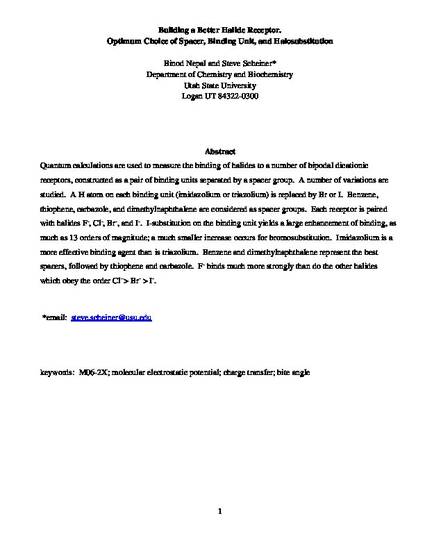
Quantum calculations are used to measure the binding of halides to a number of bipodal dicationic receptors, constructed as a pair of binding units separated by a spacer group. A number of variations are studied. A H atom on each binding unit (imidazolium or triazolium) is replaced by Br or I. Benzene, thiophene, carbazole, and dimethylnaphthalene are considered as spacer groups. Each receptor is paired with halides F-, Cl-, Br-, and I-. I-substitution on the binding unit yields a large enhancement of binding, as much as 13 orders of magnitude; a much smaller increase occurs for bromosubstitution. Imidazolium is a more effective binding agent than is triazolium. Benzene and dimethylnaphthalene represent the best spacers, followed by thiophene and carbazole. F- binds much more strongly than do the other halides which obey the order Cl- > Br- > I-.

This is the peer reviewed version of the following article: Nepal, B., Scheiner, S. I. (2016). Building a Better Halide Receptor. Optimum Choice of Spacer, Binding Unit, and Halosubstitution. ChemPhysChem, 17, 836-844., which has been published in final form at https://doi.org/10.1002/cphc.201501149. This article may be used for non-commercial purposes in accordance with Wiley Terms and Conditions for Use of Self-Archived Versions.